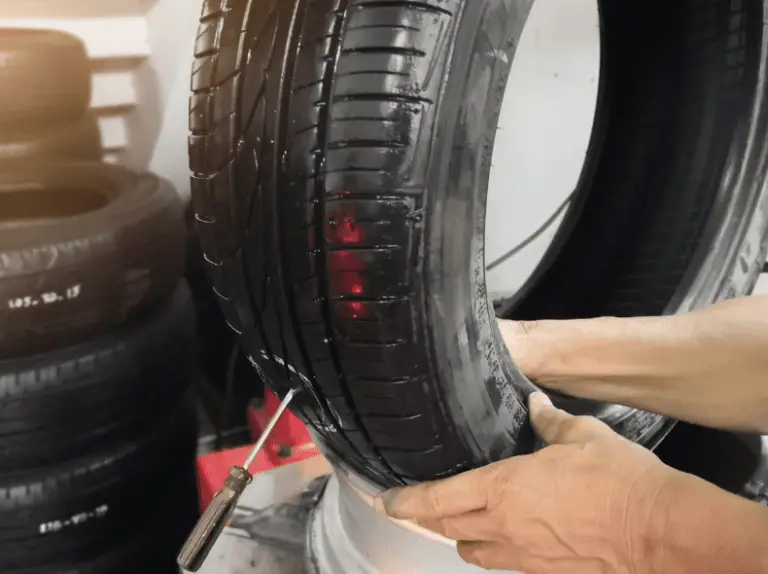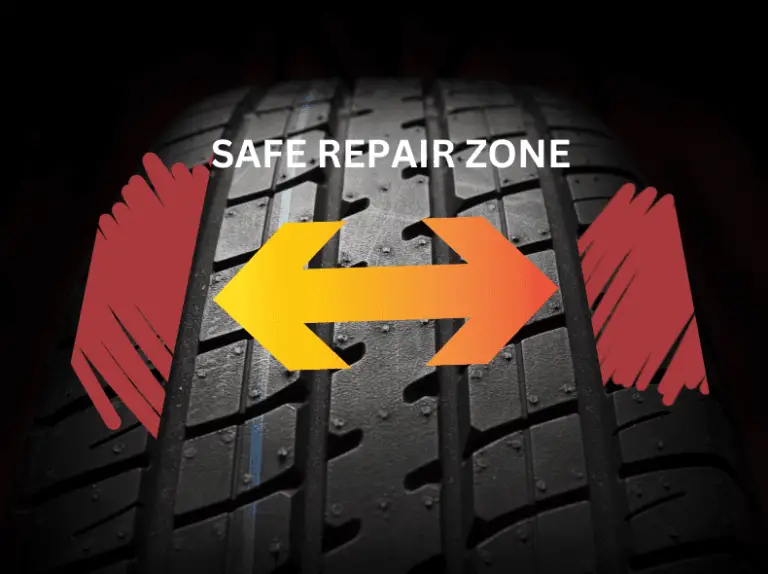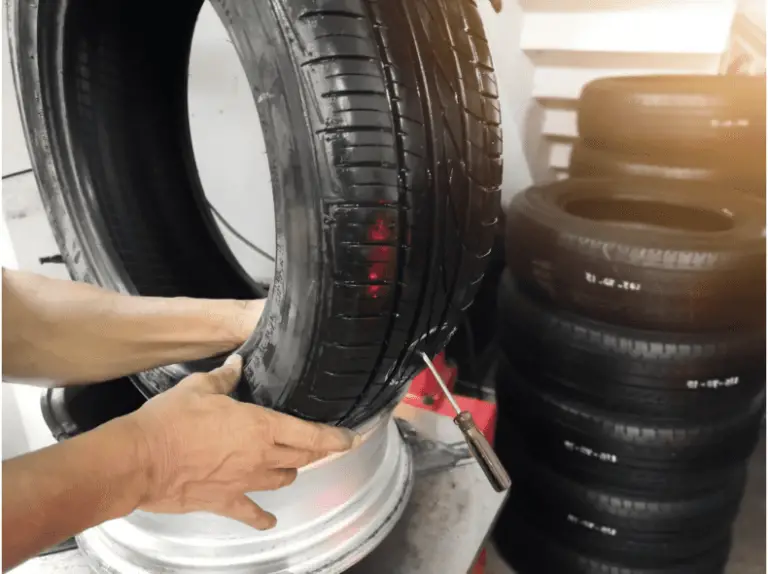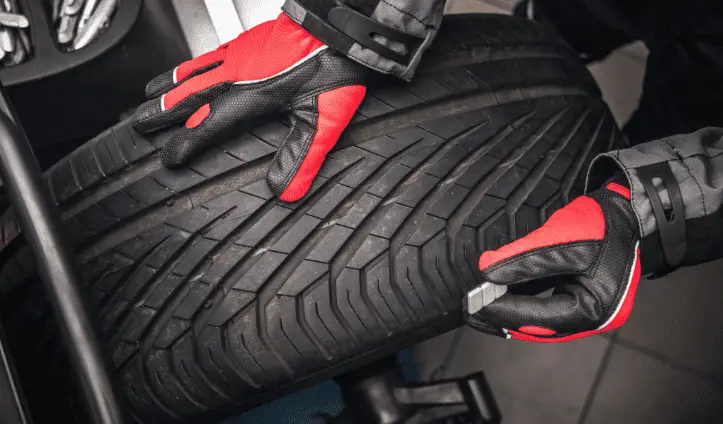New tires are expensive, and rather than simply replacing older tires, many people are looking to patch them instead.
As you know, drivers should always be ultra cautious with their tires, hence your visit here.
Five tire injuries dictate when a tire cannot be patched.
We’ll go into details below.
When Can You Not Patch A Tire
The Hole Is Too Big
Steel belts reinforce your tire tread area under the rubber and will only be able to maintain the tire’s integrity up to a certain size hole.
A puncture over ¼ inch or 6mm in diameter is too big and cannot be patched.
So what is 6mm or a quarter of an inch? A Nickel is nearly 18 mm in diameter, so if the hole appears to be a third of the circumference of a Nickel, it can’t be patched.
What you see on the outside may not tell the full story.
The hole may be bigger on the inside. You won’t see this until the tire is dismounted from the wheel.
Tire Already Patched
A tire that has already been patched can be patched again.
There are exceptions though.
Most tire shops are happy to patch a tire a second time as long as there is a gap between the previous patch and the new hole of at least 16 inches.
Why 16 inches apart?
Most car tires have a circumference of between 40 and 60 inches, so in general, not repairing less than 16 inches from the first patch ensures that the second patch will never be under heavy load in the same area as the first.
Most tire shops balk at a third patch as the structural integrity can’t be guaranteed, and they will be very cautious.
Puncture In the Shoulder Area
The tire’s shoulder area is the part of the tire that slopes away from the main tread area and down to the sidewall.
Without a shoulder, the tire design would go from the tread area and then 90 degrees to the sidewall. It would not be aerodynamic, provide a strong design, or disperse water efficiently.
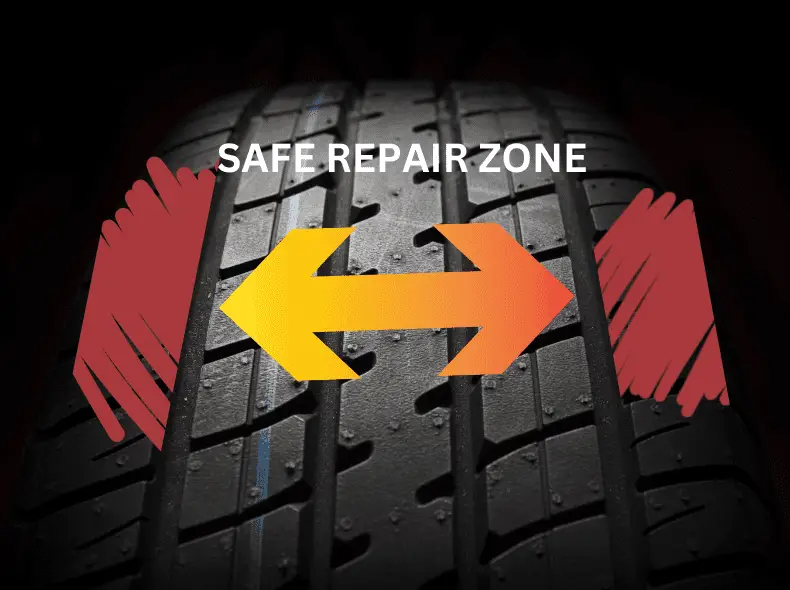
A tire cannot be patched if there is a hole in the shoulder. Ever. You need a new tire.
Why? The tire shoulder has no support, and there is a good reason why it doesn’t.
The shoulder is designed to be flexible and absorb the impact of potholes and uneven roads.
It couldn’t do this if steel belts were underneath the shoulder rubber, adding structure.
A tire shop will never patch a hole on a tire shoulder, but there will be cars with patched sidewalls that have been done at home on our roads.
The temptation will be there to patch the shoulder as it has tread on it and may appear safe, but it isn’t.
A Puncture on The Sidewall
The sidewall is the area between the lip of the tire and the shoulder. It’s smooth and has no tread on it.
Other cars often throw nails up from the road and get lodged in the sidewall, which is easier to penetrate as it’s thinner than the tread area.
The sidewall is vulnerable and, like the shoulder, has no additional strengthening. It relies on air pressure to maintain its rigidity and therefore is very susceptible to blowouts should it be holed.

A car shop will not ever patch a sidewall. Although it isn’t illegal for sidewalls to be patched – at the time of writing – all tire industry associations and manufacturers advise against it.
Flat Tire That Has Been Driven On
Sometimes we choose to drive to a place of safety on a flat tire than change it right away. Although this could be the right choice to ensure safety, it can damage a tire beyond repair.
The tire’s sidewall collapses and rubs against the road when it is flat, causing damage.
Even if the hole was in a repairable tire tread area, it’s likely it can’t be driven on again.
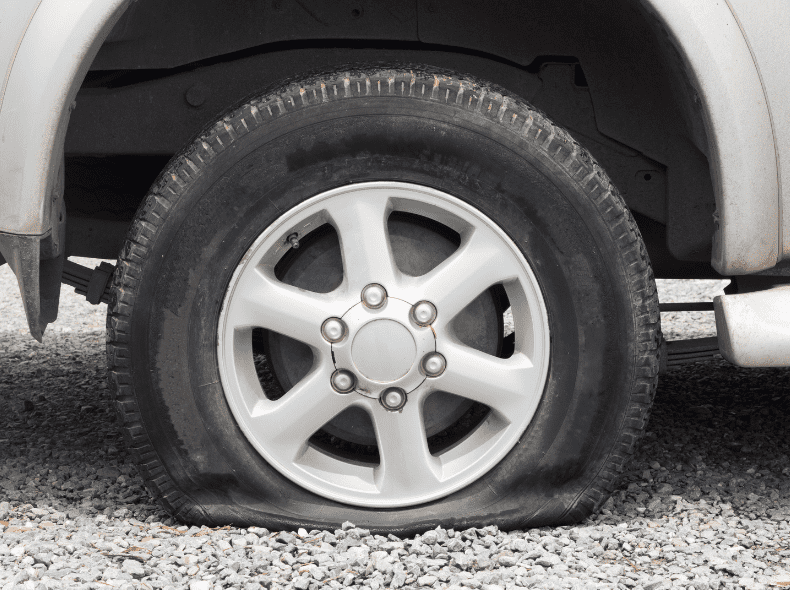
Look for signs of scuffing along the tire’s circumference where the sidewall has been folded a little by it being flat.
You don’t always see bad damage on the outside, but when the tire is taken off to be patched, the damage is more obvious on the inner sidewall.
In Conclusion
A tire cannot be patched if:
- The hole is bigger than 6mm
- If it has been patched before within 16 inches of the new hole
- If the hole is on the tire’s shoulder
- If the hole is on the sidewall of the tire
- You have driven on a flat tire
Never be tempted to patch a tire in the above circumstances. You may void your car insurance, cause an accident and suffer a blowout.
Some tire warranties – especially road hazard warranties – will pay cash using a calculation based on tire age, cost, and tread depth when the tire was damaged.


![How Big A Hole Can You Patch In A Tire? [RESOLVED] tire-tread-hole](https://carzaza.com/wp-content/uploads/2023/12/tire-tread-hole-300x150.png)
![How To Patch A Big Hole In A Tire [All The Stages] tire-patched](https://carzaza.com/wp-content/uploads/2023/12/tire-patched-300x224.png)

![How Fast Can You Drive On A Patched Tire? [ANSWERED] tire-patch-repair](https://carzaza.com/wp-content/uploads/2023/12/tire-patch-repair-300x150.png)
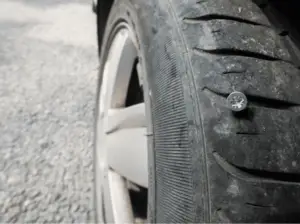
![When Can A Tire Not Be Repaired? [Answered] SAFE-REAPIR-AREA](https://carzaza.com/wp-content/uploads/2023/12/SAFE-REAPIR-AREA-300x224.png)
